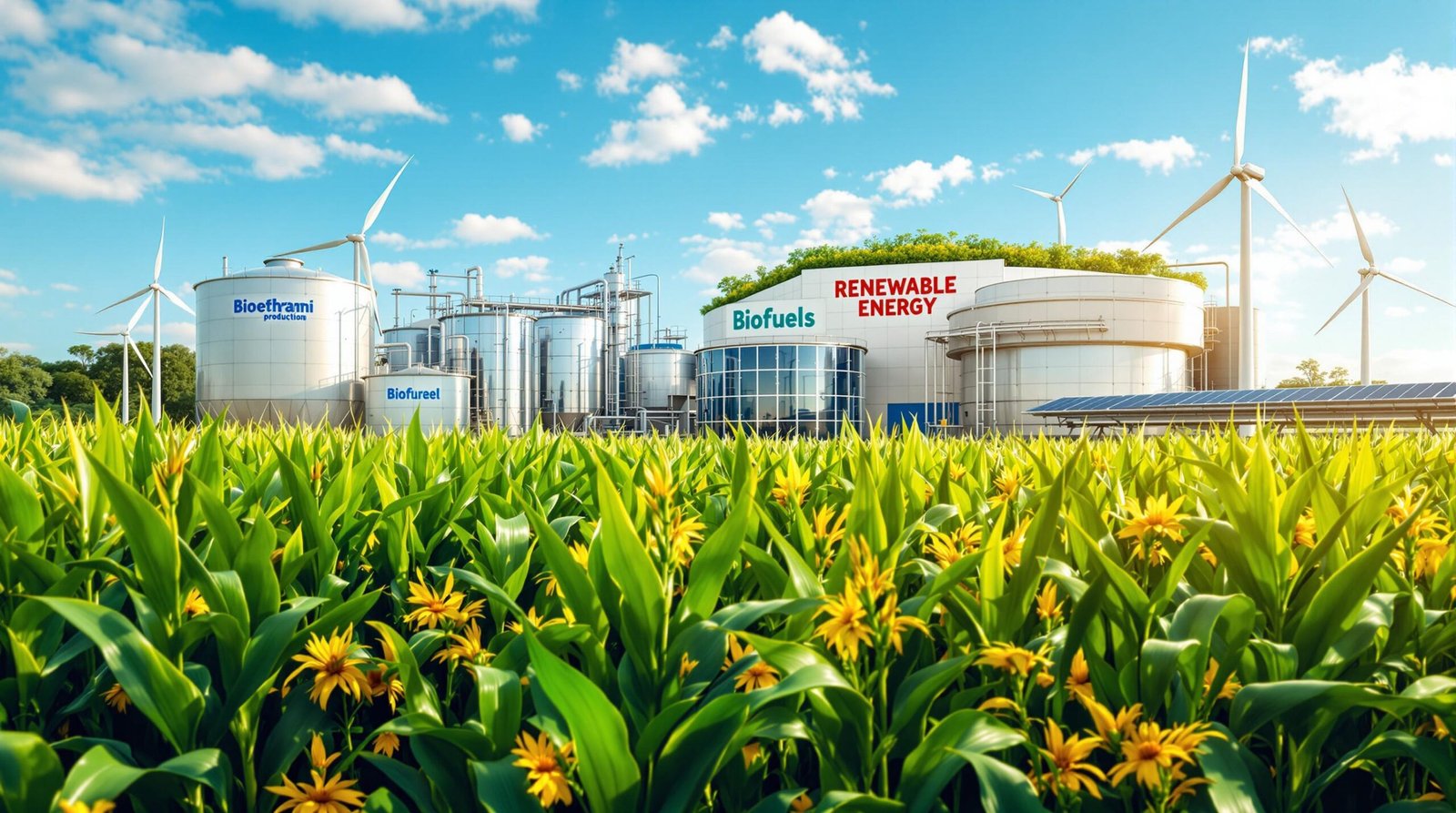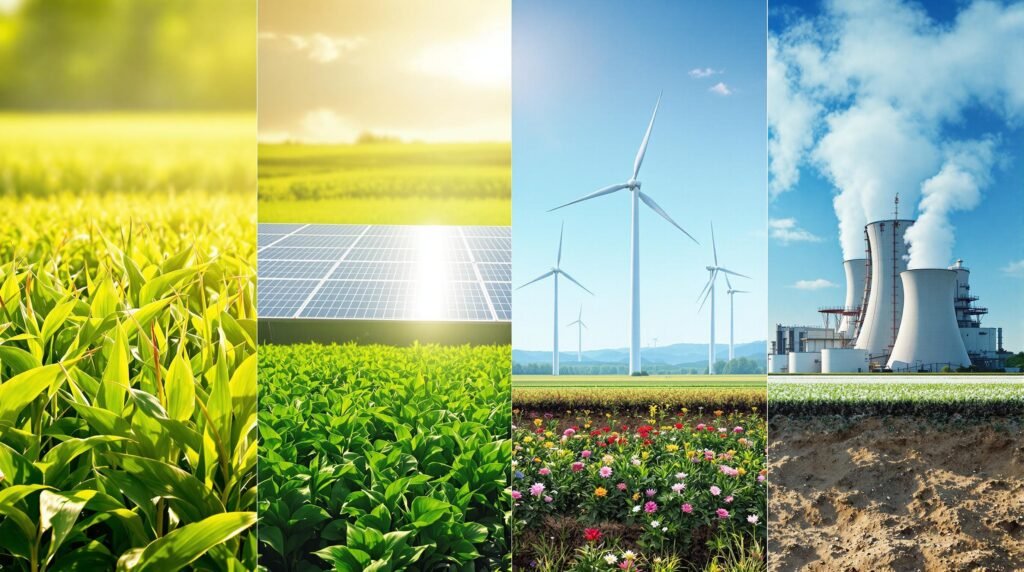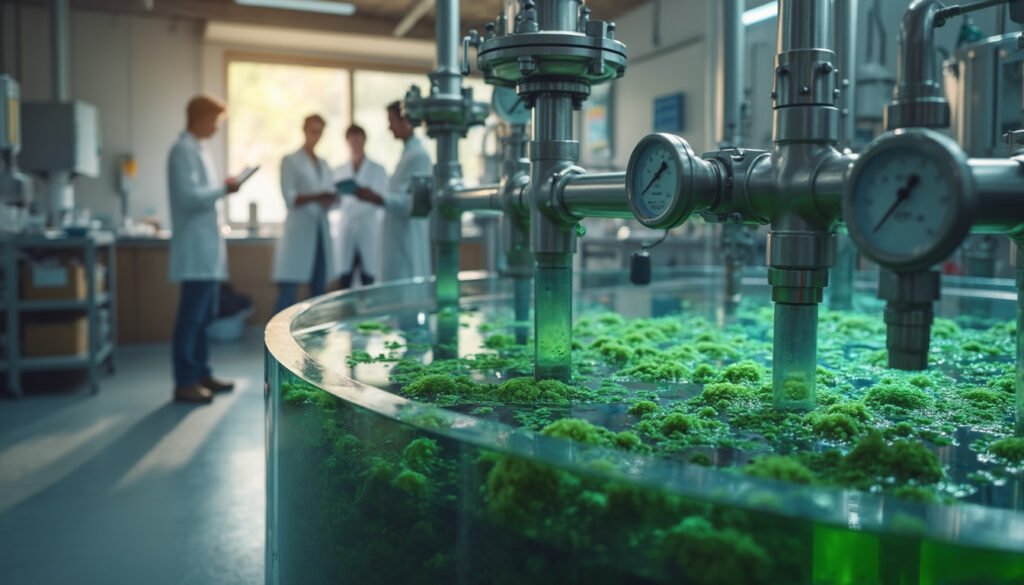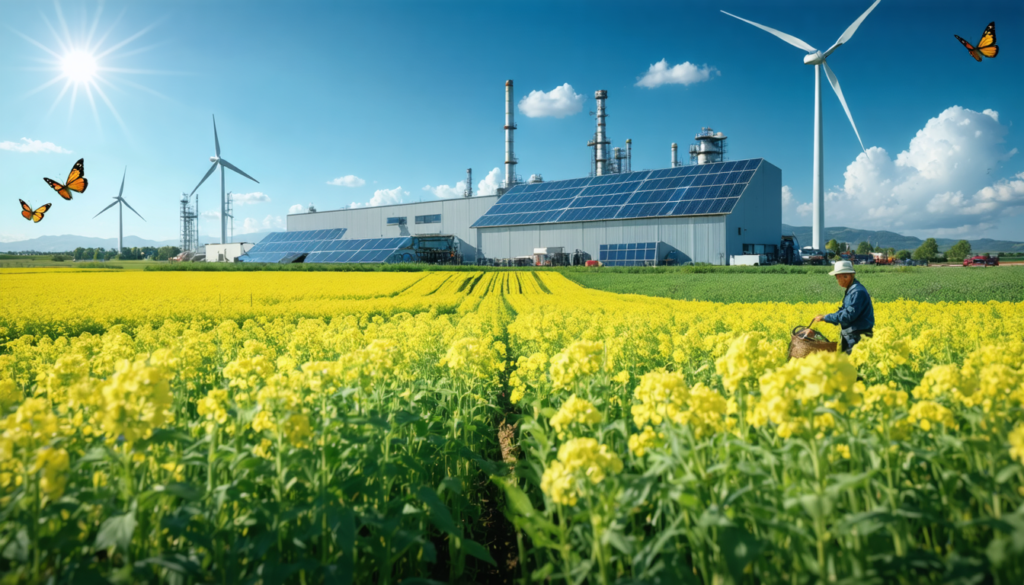As global concerns regarding climate change and environmental sustainability grow, the urgent need for effective energy solutions has become increasingly apparent. Fossil fuel dependency poses critical challenges, such as rising greenhouse gas emissions and air pollution, impacting public health and exacerbating the climate crisis. In this context, biofuels emerge as a promising alternative, offering the potential to reduce carbon footprints while utilizing renewable resources.
The rise of biofuels presents significant possibilities for enhancing energy security, promoting rural development, and reducing environmental degradation. Yet, ongoing debates question the sustainability of biofuels, addressing issues related to land use, food security, and overall lifecycle emissions. This discussion will explore essential aspects of biofuels, highlighting their emergence as viable renewable energy sources and their potential role in creating a more sustainable energy future.
With a balanced view, it becomes necessary to delve into the nuances surrounding biofuels, examining their production processes, benefits, challenges, and role in the transition to sustainable energy systems.
Understanding Biofuels: Definition and Types
Biofuels are derived from organic materials—typically plants and waste products—that can be converted into energy. Unlike fossil fuels, which are derived from ancient carbon deposits, biofuels can be regenerated and are part of a renewable energy cycle. The main types of biofuels include:
- Biodiesel: Produced from vegetable oils, animal fats, or recycled cooking grease, biodiesel is often used in conventional diesel engines.
- Bioethanol: Typically made from sugarcane, corn, or other starches, bioethanol is primarily used as a gasoline additive.
- Synthetic fuels: Derived from agricultural waste, synthetic fuels can operate in existing combustion engines with reduced emissions.
- Biogas: Generated from the anaerobic digestion of organic matter, biogas is primarily composed of methane and can be utilized for electricity generation or heating.
- Advanced biofuels: Includes fuels produced from non-food crops, algae, and waste materials, often aiming to achieve lower lifecycle greenhouse gas emissions.
The Biofuel Production Process
Biofuel production involves several stages, from feedstock cultivation to processing and distribution. Understanding this lifecycle is crucial for evaluating biofuels’ sustainability. Generally, the process includes:
- Feedstock Cultivation: Successful biofuel production begins with selecting suitable crops or organic waste sources that provide optimal yields with minimal environmental impact.
- Harvesting: After cultivation, harvesting captures the feedstock effectively, further ensuring quality and quantity for processing.
- Processing: This stage involves converting raw materials into usable fuels through various methods, including fermentation for bioethanol and transesterification for biodiesel.
- Distribution: Final biofuels must be efficiently transported to consumers, necessitating existing infrastructure or new logistics systems.
The Sustainability Debate: Pros and Cons
Biofuels are often touted as a sustainable solution to energy challenges, but the sustainability debate remains complex. Key arguments for and against biofuels include:
Advantages of Biofuels
- Lower greenhouse gas emissions: Biofuels generally produce lower carbon emissions compared to fossil fuels, contributing to climate change mitigation.
- Energy security: As renewable resources, biofuels offer an opportunity to diversify energy supplies and reduce dependence on imported oil.
- Environmental benefits: Many biofuels derive from waste products or non-food crops, contributing to waste management and sustainable agricultural practices.
- Job creation: The biofuel sector can stimulate economic growth and create jobs, particularly in rural areas through farming, production, and distribution.
Challenges and Criticisms
- Land use competition: Cultivating biofuel crops can compete with food production, leading to concerns over food security and higher food prices.
- Environmental concerns: Expanding agricultural use may lead to deforestation, habitat loss, and soil degradation.
- Lifecycle emissions: Critics point out that biofuels may not be as clean as believed when factoring in land use changes and production processes.
- Investment requirements: Developing a biofuels infrastructure demands significant investments in technology, research, and logistics.
Biofuels in the Southeast Asian Context
Within Southeast Asia, biofuels present unique opportunities and challenges aligned with the region’s agricultural strengths and energy needs. The reliance on fossil fuels for energy exposes countries to price volatility and environmental degradation. Yet, Southeast Asian countries have the potential to harness their agricultural resources for biofuel production. Examples include palm oil-based biodiesel in Indonesia and bioethanol from sugarcane in Thailand.
The diverse ecosystems and agricultural practices within the region can play a pivotal role in developing sustainable biofuel pathways. However, careful consideration must be given to land management to prevent deforestation and food insecurity. National policies regarding biofuel development are crucial, as they can either support sustainable practices or contribute to environmental harm.
Regulation and Policy Frameworks
Effective regulation is essential for ensuring that biofuel production remains environmentally sustainable. Policymakers must consider:
- Defining sustainability criteria: Regulations should establish guidelines for sustainably sourced feedstocks, addressing land use, biodiversity, and fertilizer applications.
- Implementing incentives: Financial incentives for sustainable practices can encourage adoption and drive innovation within the biofuels sector.
- Research and development funding: Supporting research into advanced biofuels and production technologies can enhance sustainability.
- International cooperation: Collaboration between countries can promote knowledge sharing and best practices in biofuel production and sustainability.
Case Studies: Successful Biofuel Implementations
To illustrate successful biofuel initiatives, several companies and projects exemplify innovative approaches to biofuel production and sustainability. Analyzing these cases provides insights into best practices and lessons learned.
Porsche and Synthetic Fuels
Porsche’s investment in synthetic fuels demonstrates a cutting-edge approach to biofuels. These fuels are produced from renewable energy, carbon dioxide, and water, providing a promising zero-emission alternative for sectors where electrification is challenging. Transitioning to synthetic fuels could achieve an 85% reduction in carbon emissions compared to traditional fossil fuels. This innovation aligns well with Porsche’s commitment to sustainability and carbon neutrality.
Shell’s Sustainable Aviation Fuel
Shell Aviation’s focus on Sustainable Aviation Fuel (SAF) exemplifies another facet of biofuel innovation, producing jet fuel from sustainable feedstocks. The company claims that SAF can reduce lifecycle carbon emissions by up to 80%. By operationalizing SAF at major airports, Shell contributes to decarbonizing the aviation sector, which has been notoriously hard to electrify. These advancements not only support global sustainability targets but also encourage stakeholders within the aviation industry to adopt cleaner practices.
The Future of Biofuels: Challenges and Opportunities
The future of biofuels remains dynamic, characterized by both considerable promise and complex challenges. The sector could revolutionize how societies meet energy needs while addressing climate change if approached holistically.
Innovation in Production Techniques
Advances in biotechnology and agricultural practices are pivotal for transforming biofuel production. Innovations include:
- Genetic engineering: This can enhance crop yields, enabling higher biofuel outputs without additional land usage.
- Second-generation feedstocks: Utilizing agricultural waste and non-food crops lessens competition with food production.
- Microalgae cultivation: Microalgae represent a negligible footprint on land usage while offering substantial oil yields for biofuel production.
Public Awareness and Consumer Behavior
Raising public awareness about the benefits and importance of biofuels can enhance consumer acceptance and drive demand. Educational campaigns that outline their potential in reducing emissions and fostering sustainability are critical to encouraging ethical consumption.
Conclusion: Striking a Balance for a Sustainable Future
Achieving a sustainable energy future will require commitment, innovation, and collaboration among governments, businesses, and communities. By recognizing biofuels’ role in addressing energy demands with environmental sustainability, we can pave the way for a cleaner, greener future. The journey toward embracing biofuels necessitates that we balance their benefits with potential drawbacks, ensuring that their deployment does not compromise food security or environmental conservation.





